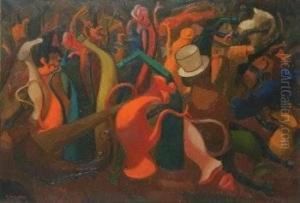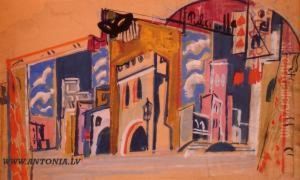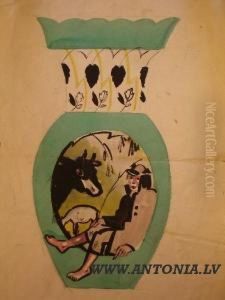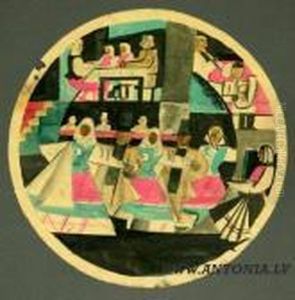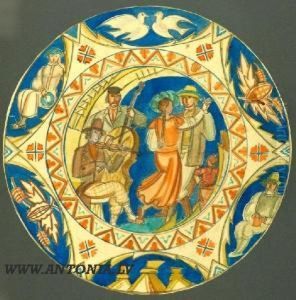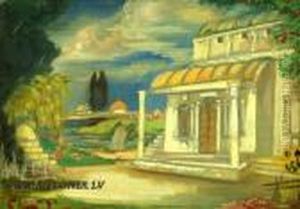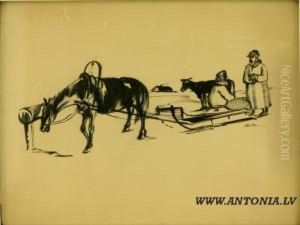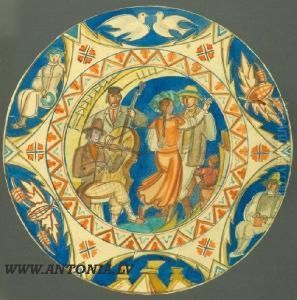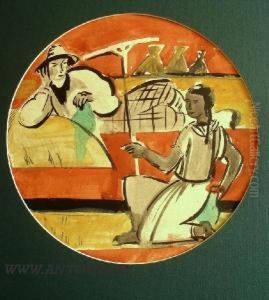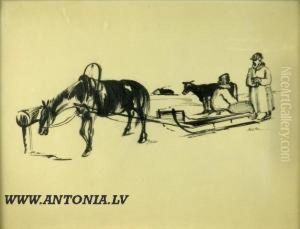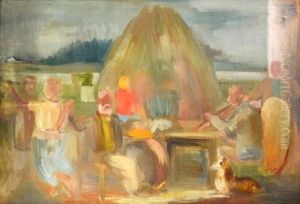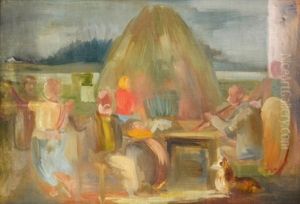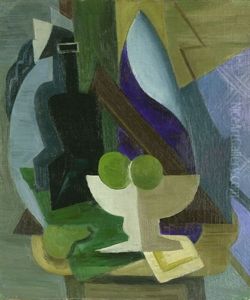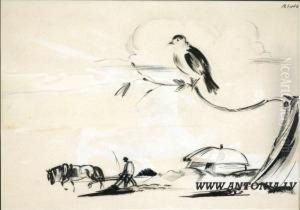Romans Suta Paintings
Romans Suta was a Latvian painter, graphic artist, stage designer, and art theorist, who is recognized as one of the key figures in the Latvian avant-garde movement. Born on August 24, 1896, in Aleksandrovka, Latvia, then part of the Russian Empire, Suta studied at the Riga City Art School before furthering his education at the Imperial Academy of Arts in St. Petersburg.
During his early career, Suta was significantly influenced by the modernist movements of the time, such as Cubism and Futurism. He was a co-founder of the Latvian avant-garde group Riga Group of Artists (Rīgas Mākslinieku Grupa) in 1920 and often collaborated with his wife, the painter Aleksandra Beļcova. Suta was known for his innovative approach to art, which combined elements of modernist styles with traditional Latvian folk art motifs.
Suta's body of work is diverse, including book illustrations, theatrical set designs, and a wide range of graphic works. He was also involved in the applied arts, designing furniture, interiors, and contributing to the development of Latvian textile patterns. As an art theorist, Suta wrote extensively on art and aesthetics, influencing the Latvian art scene.
In addition to his visual arts practice, Suta played a role in the Latvian cultural scene by organizing exhibitions and promoting Latvian art both domestically and abroad. His efforts helped to establish Riga as a significant center for avant-garde art in Eastern Europe during the interwar period. Unfortunately, Romans Suta's career was cut short by the political turmoil of the era. He was arrested during World War II and died in 1944 under unclear circumstances. Despite his premature death, Suta's contributions to Latvian art and culture remain influential, and his works are celebrated for their originality and vibrant expression of modernism.
